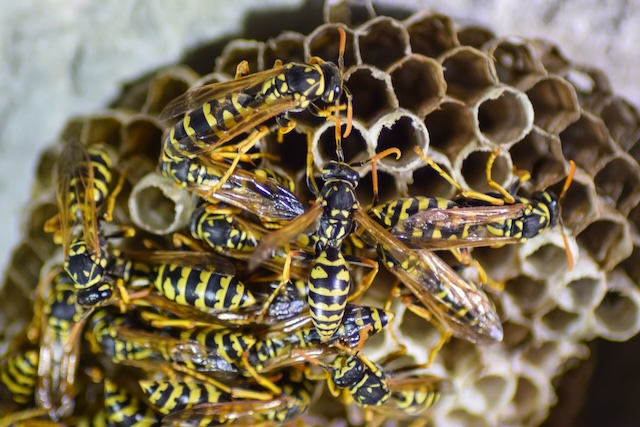As summer goes on and backyard parties become more appealing, so does the constant buzzing of wasps. The first thing you can do to control the buzzing insects around your home is to learn about their life cycle. The wasp lifecycle is very complicated. Let’s go on a trip through it, from the egg to the fully grown adult.
1. The Humble Start: The Wasp Egg
Wasps start their lives by laying eggs, which are called queens. Every egg that the queen lays is carefully put in its own cell in the nest. These eggs are very small—almost microscopic—and are often missed because they are safe inside the nest.
2. Changing from eggs to larvae
Legumes come out of the eggs when they hatch. At this point, wasp larvae are like worms and don’t have legs. They need to be cared for by worker wasps at all times. The larvae grow quickly because the insects and other small food that worker wasps gather are high in protein.
Third, pupation means changing into pupae.
They move into the pupal stage when they reach full size. This time of change is like a transformation, where the once-squirming larvae go through a big change. While inside a safe cocoon, the pupae change on the inside, gaining the characteristics that will make them unique as adults.
4. Coming out: When adult wasps are born
The pupal stage ends and the adult wasps come out. These are the kinds of people we often see buzzing around flowers, fruit, and, sadly, our picnics. Adult wasps are very important to the colony’s survival. Worker wasps take care of the nest’s needs, and the queen is focused on having babies.
5. How society works: Queens, Workers, and Drones
Figuring out how the social structure of a wasp swarm works can help you understand how their lifecycle works. The queen is the mother and is in charge of having babies and laying eggs. Worker wasps, which are females that don’t have babies, are very important to the colony because they take care of the nest, look for food, and feed the young. Drones are male wasps whose only job is to mate with a queen so that the colony can stay alive.
6. Changes with the seasons: the rise and fall of colonies
There are no set stages in the lifecycle of a wasp population. It changes with the seasons. As married queens come out of hibernation for the winter, new colonies are set up in the spring. In late summer, when there are a lot of worker wasps and a lot of attention on making new queens, the colony is at its busiest. As winter comes, the colony shrinks, and only the mated queens look for shelter to stay warm.
Taking Care of the Lifecycle: How to Stop and Control Wasps
Understanding the complicated stages of a wasp’s life is key to keeping them from spreading and controlling them. Early spring is the most important time to deal with possible babies before they become a problem in the summer. A complete plan for getting rid of wasps must include regular checks, placing traps in key places, and quickly removing nests.
In conclusion, the lifecycle of a wasp is very interesting, from egg to adult. Each step is very important for the survival and success of the colony. Homeowners can better protect themselves from and get rid of wasps now that they know more about the complicated world around them.
